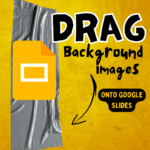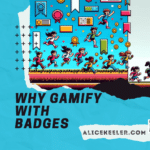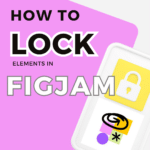Students May Not Be Fans of Cold Calling
In both virtual and face to face learning environments I am not a fan of cold calling. Cold calling refers to calling on a student or participant in a lesson “out of the blue,” meaning that their hand wasn’t raised or they haven’t indicated that they want to speak or ask a question.
Maybe this comes from the fact that I don’t like catching students off guard, especially if the flow of the lesson is going well—to me, it seems unnecessary to stop that flow to call on a student unprompted. Maybe this comes from the fact that, growing up, I had teachers that cold called but were really bad at it. It always seemed like the student was unprepared to answer or that they had to fumble through their notes and resources to find the answer. Maybe this comes from the fact that I also hate being cold called myself—I don’t like the spotlight on me when I am not in a mental and emotional space to engage. At any rate, to me cold calling always seemed like a cheap trick to make sure that students were always engaged at the expense of putting them on the spot in front of all of their peers.
I still have mixed feelings about cold calling. I’ve seen it done well and I’ve also seen it done poorly. I think that cold calling is also extremely complicated in a virtual learning environment. If you cold call a student via Zoom, Google Meet, or Teams, there is no guarantee that they will answer either verbally or in the chat box or even at all. It can be tricky to engage students in cold calling if you are not physically there with your students.
Strategies for Effective Cold Calling
Today, I’ll be sharing some cold calling strategies that I’ve observed that have worked really well—both in a virtual learning environment and in a face to face learning environment. Who knows, maybe I might try them in the near future!
- It’s all about the language. This isn’t really a strategy as much as it is a principle: lead with positive language when you cold call on somebody. This isn’t to say that it needs to be all sunshine and rainbows and flowers but frame your cold calling questions with the goal of eliciting ideas out of students instead of pigeonholing them into giving you one answer.
I remember a situation from when I was a student myself; a teacher was cold calling on a student and said something to the effect of “Jayden, why aren’t you listening?!” and “Jayden, I need the answer to my question right now. Do you have it?” Not only did this come off as extremely aggressive but Jayden was NOT having it. He shut down because the cold call felt like he was being picked on instead of being called on to answer a question. Imagine if the teacher would have said something along the lines of “Jayden, what do you think about this?” or “Jayden, I’m interested in hearing your thoughts. Do you have an answer?” A complete change in framing, phrasing, and tone would have gone a long way.
- Keep an open mind about how you collect responses, and how often you collect responses. It’s 2020 and the word of the year is “flexibility,” especially if you are in a virtual teaching environment. I visited a classroom the other day where the teacher utilized the chat box for cold calling. Students could turn on their cameras and speak if they wanted to, but almost all of the cold calling was done via the chat box. The teacher would ask a question (i.e. “Eliza, I’m wondering if you know what a proportion is?”) and the student would respond to the teacher’s cold call in the chat box. Additionally, if a student was stuck and could not answer, the teacher would invite other students to chime in and help (i.e. “It looks like we might benefit from some other opinions here. Jacob or Maryann, do you know what a proportion is?”). It was really neat to see the chat feature being utilized like that and it was such a low stress way to implement cold calling into a lesson. I can also see this working well in a face to face environment with programs like Pear Deck and Padlet—students can write their responses within these platforms and share them out to the class digitally.
- If it’s not working, don’t push it—find alternatives. If you find that students are not being receptive to cold calling in your face to face or virtual learning environment, there are many other strategies that you can use to have them demonstrate that they are listening and actively participating. One cool alternative that I’ve seen is utilizing reactions on Teams and Zoom to display that students are listening (i.e. “give me a thumbs up if you understand,” “give me a clap if you are finished”). This removes the personal element of cold calling but still gives students options to respond.
Make A Plan
So, whether you are in the camp of cold calling or not, hopefully these strategies help you understand better communication with your students. If you like them, please share with your colleagues!
About the Author

Victoria Thompson is a STEM Integration Transformation Coach based in Seattle, WA. She moved to the area in 2018 with her wife Kourtney, where her career has pivoted to focusing on K-12 mathematics instruction with research on decolonizing mathematics curriculum for teachers and learners, creating inclusive math environments, and using technology to bridge equity gaps in math education. She is a certified Microsoft Innovative Educator, a National Geographic Educator, an Apple Educator, an InsPEARational Educator, and an educational technology consultant for tech companies in the Seattle area.







